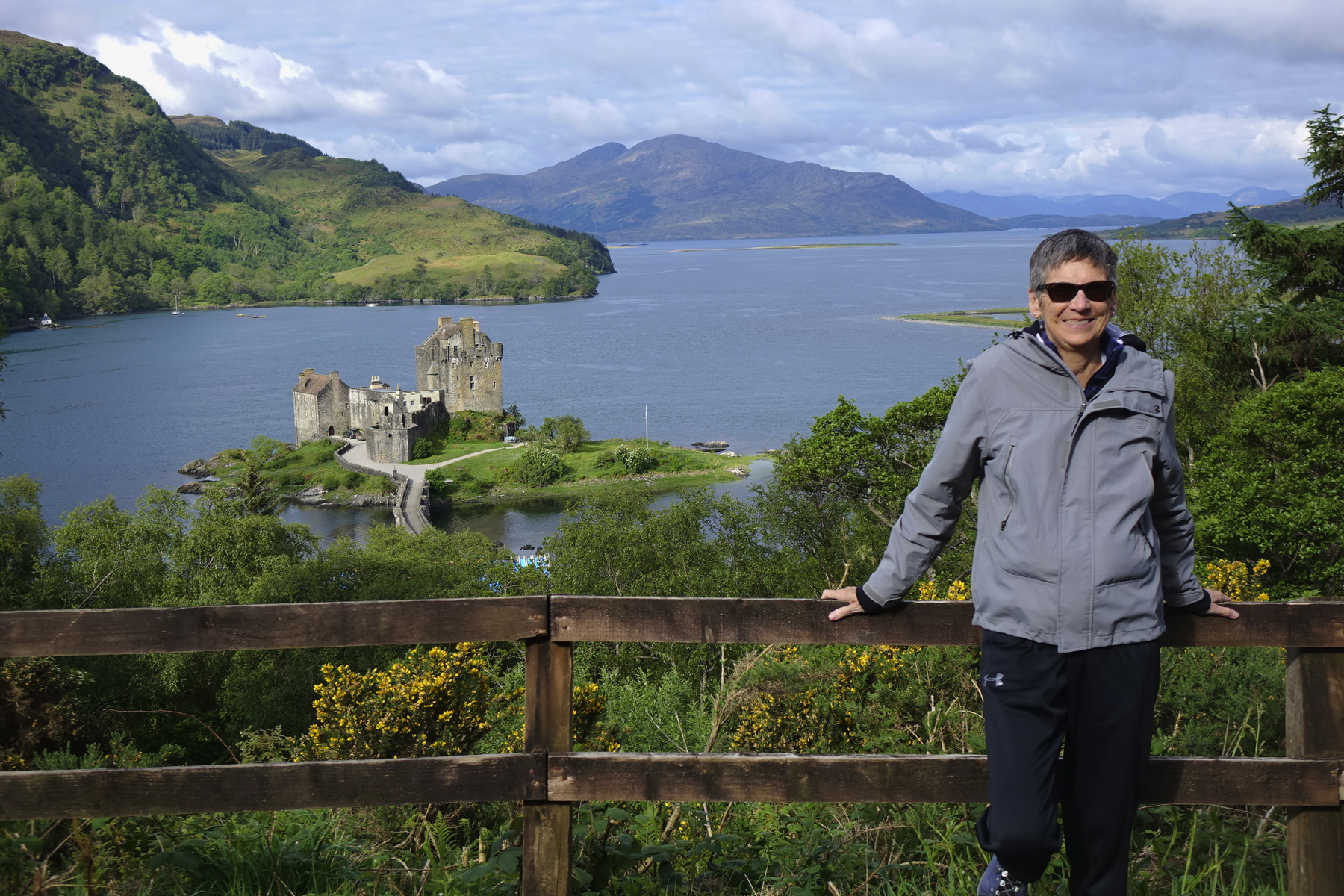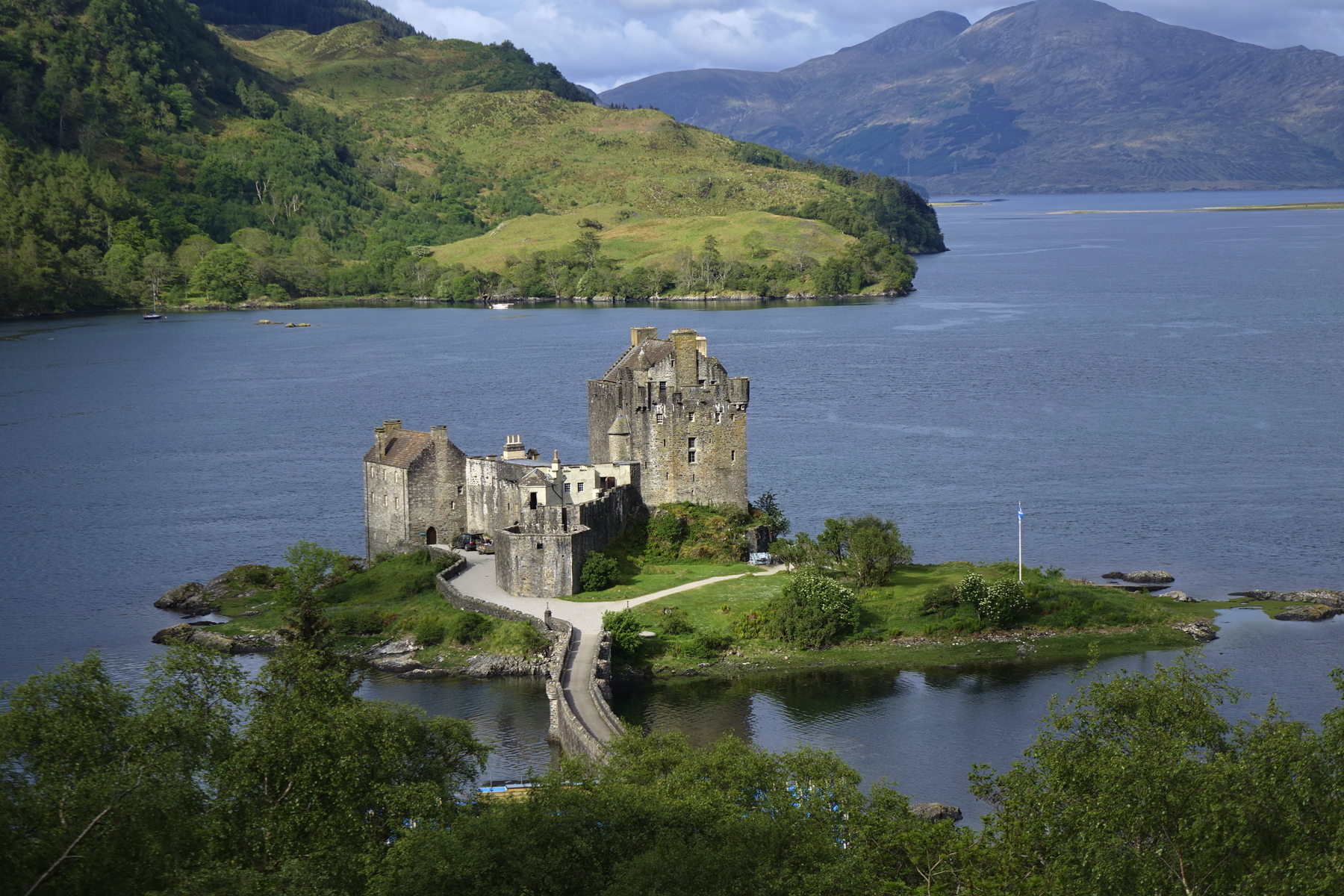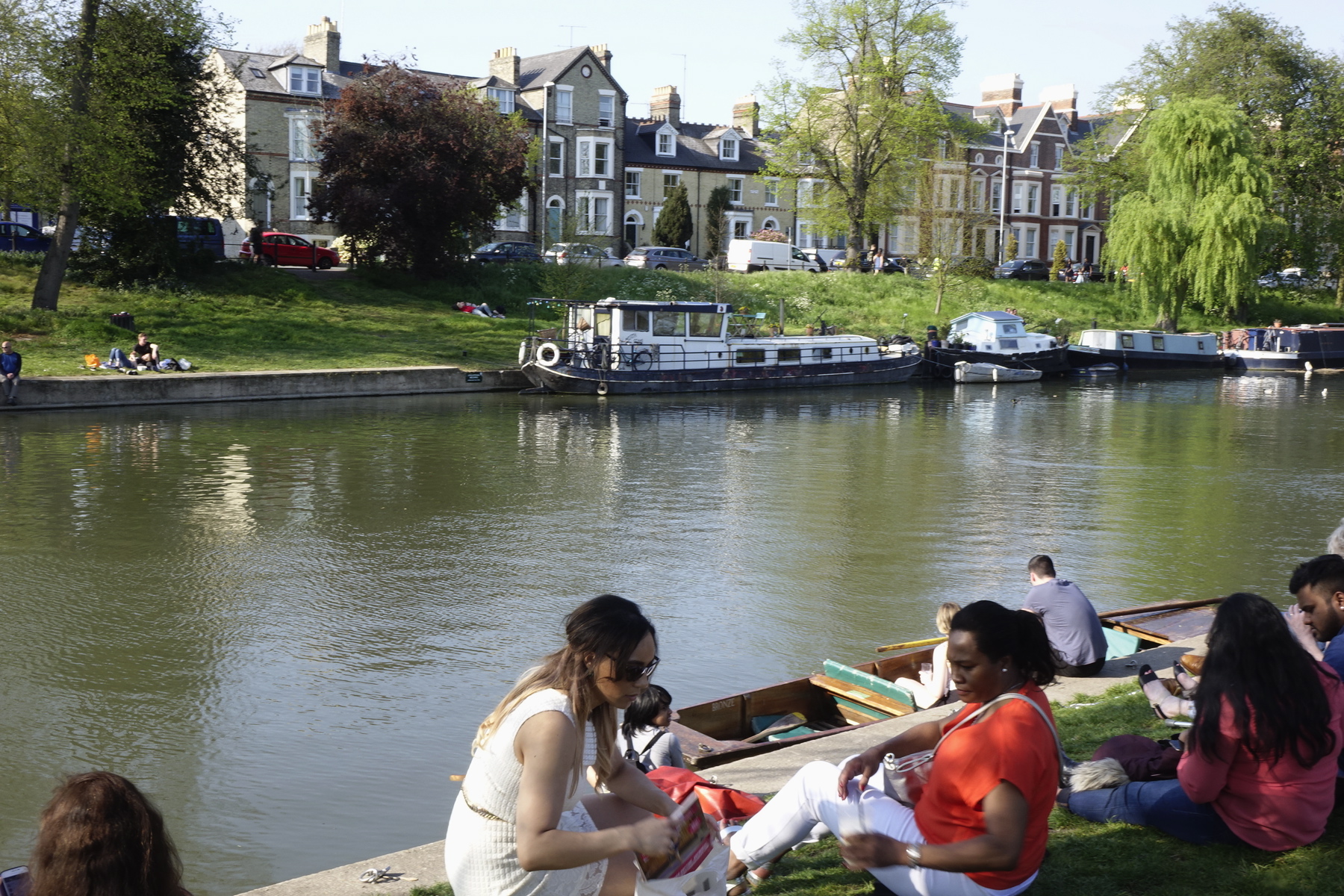
Eilean Donan Castle
In all of your trips to Europe to follow my exploits, I am sorry that I never took you to the Scottish Highlands to see the home of your Clan Mackenzie ancestors, so I traveled there for you.
Now your traveling days are over, so I will paint a word picture of Scotland just as you used to paint magnificent landscapes of the places you visited in Norway, France, Germany and Switzerland that fill our walls with memories.

Loch Duich, Western Scottish Highlands
But how can words ever describe the austere beauty of this rugged land?

Scottish Highlands
A melancholy, capricious land of jagged sea lochs, sheer cliffs and intimidating mountains that inspires myths and legends. Close-shaved shrubs in muted tones -ocher, sienna, and charcoal – cover desolate heath that burst into color under blue skies. Rare sunbeams spotlight the raw grandeur of this roughhewn landscape. A place where ancient castles withstood centuries of battle and weather-beaten homes cling to steep hill sides where grazing sheep far outnumber humans.

Eilean Donan Castle; Loch Duich & Loch Alsch
Though you never ruled Eilean Donan Castle, where Clan Mackenzie’s story began, after having visited this land of shimmering lochs, I see a reflection of the powerful lords of Scotland in you.
Like Kenneth, Collin, Malcolm and our other mighty Mackenzie chiefs of yesteryear, you led our American clan, an honor bestowed from beloved Grandpa Mac. In Gaelic clan means children. At its best the chief held tribal lands on behalf of all ordinary clans people, who shared a relationship like adult children to a father. You, too, protected us and cared for our McKinzie “chateau,” a lakeside cabin, tucked in the woods, a deed generously gifted to future generations.
 Though unlike our ancient clan chiefs, you never led your tribe in battle against the Munros, MacLeods, or MacDonalds, you inspired countless warriors on the playing fields of Sterling to conquer “enemies” in Dixon, Rock Falls and Rochelle.
Though unlike our ancient clan chiefs, you never led your tribe in battle against the Munros, MacLeods, or MacDonalds, you inspired countless warriors on the playing fields of Sterling to conquer “enemies” in Dixon, Rock Falls and Rochelle.
Instead of swords, you gave each athlete a moral compass on how to live.

Dornie, on Loch Long
A traveler at heart, you instilled the wanderlust, driving us coast to coast across the highways of America. How you would have loved navigating Scotland’s endless back roads and exploring footpaths through purple heather, around misty lakes and along ragged seashores.
As an adventuresome outdoorsman, you taught us to read maps hiking in the wilderness of Wisconsin discovering lost lakes hidden in dense forests. You showed us how to identify moss and trees, to distinguish deer prints and chipmunk burrows, to find beaver dams and fox dens.
The Highland (Gaelic) culture was also filled with spellbinding, storytellers. Around campfires, you too spun fine tales about the Hodag, the mythical beast of the north woods, our American version of Nessie, the Loch Ness monster of Scotland.
As if clan bloodlines transcended generations, like your father and his forefathers, you became a leader of men and women. You taught us a code of honor, respect for our fellowman, and fierce loyalty toward family.
Perhaps our resilient constitution, strength of character, love of nature, and reverence for an honest days work were virtues passed on from our ancestry. Who knows?
But this I know is true.

Clan McKinzie , USA
As the head of our McKinzie clan, you set the finest example of what it means to be an honorable leader, a strong chief, and a benevolent father.
Even though you regret that you never set foot on the windswept moors of your ancestors, the Scottish Highlands have always been a part of you.
Happy Father’s Day Dad from Scotland


 Ever since I found out that my paternal lineage goes back to the 12th century Clan Mackenzie, I dreamed of following their trail from Eilean Donan Castle on the west coast across the Scottish Highlands and the Kintail mountains to Castle Leod on the eastern shores.
Ever since I found out that my paternal lineage goes back to the 12th century Clan Mackenzie, I dreamed of following their trail from Eilean Donan Castle on the west coast across the Scottish Highlands and the Kintail mountains to Castle Leod on the eastern shores. Mackenzie’s, once the strongest clan in the north of Scotland, reigned for centuries. From rich, warlords to cash strapped landlords, their story portrays the end of the clan system as fortunes changed hands after the Highland Clearances. Their lives were as rugged as the lands they ruled. Filled with craggy inlets, mist-covered mountains, and broody glens, their land lends way to legends.
Mackenzie’s, once the strongest clan in the north of Scotland, reigned for centuries. From rich, warlords to cash strapped landlords, their story portrays the end of the clan system as fortunes changed hands after the Highland Clearances. Their lives were as rugged as the lands they ruled. Filled with craggy inlets, mist-covered mountains, and broody glens, their land lends way to legends.


 I went to Cambridge, the prestigious medieval university, only as a tourist, but boy did I get educated. Though my former students have attended these hallowed grounds, I felt like a dunce when I realized Cambridge was not one central institution, but actually 31 different colleges under the administrative umbrella of the University. The colleges, established between the 11th and 15th centuries, have unique, individual histories.
I went to Cambridge, the prestigious medieval university, only as a tourist, but boy did I get educated. Though my former students have attended these hallowed grounds, I felt like a dunce when I realized Cambridge was not one central institution, but actually 31 different colleges under the administrative umbrella of the University. The colleges, established between the 11th and 15th centuries, have unique, individual histories.
 cheese rolls, salt & vinegar crisps (chips) were followed by sweets – brownies, French cakes – pink, chocolate and yellow frosted squares and strawberries.
cheese rolls, salt & vinegar crisps (chips) were followed by sweets – brownies, French cakes – pink, chocolate and yellow frosted squares and strawberries. rchitecture, and known for it stained glass windows whose refracted light creates incredible beauty under the vaulted ceiling. The chapel, a Tudor masterpiece, commissioned by Henry VII, was completed under Henry VIII reign.
rchitecture, and known for it stained glass windows whose refracted light creates incredible beauty under the vaulted ceiling. The chapel, a Tudor masterpiece, commissioned by Henry VII, was completed under Henry VIII reign.







 “Everyone – men and women – can pledge to take a concrete step to help achieve gender parity more quickly and each of us can be a leader within our own spheres of influence and commit to take pragmatic action to help include and advance women.”
“Everyone – men and women – can pledge to take a concrete step to help achieve gender parity more quickly and each of us can be a leader within our own spheres of influence and commit to take pragmatic action to help include and advance women.”

